The Oakland City Council voted to approve a financial term sheet for Howard Terminal, a mixed-use development with housing, offices, and a new baseball stadium proposed by the Oakland A’s with an estimated $12 billion price tag. However, A’s president David Kaval has repeatedly signaled that yesterday’s approval could spell the end of the team’s future in Oakland because the term sheet approved is not what the team wanted. While Mayor Libby Schaaf is hopeful about the project’s future, Kaval was noncommittal about if the team would continue to negotiate. As it stands, the development is proceeding on thin ice.
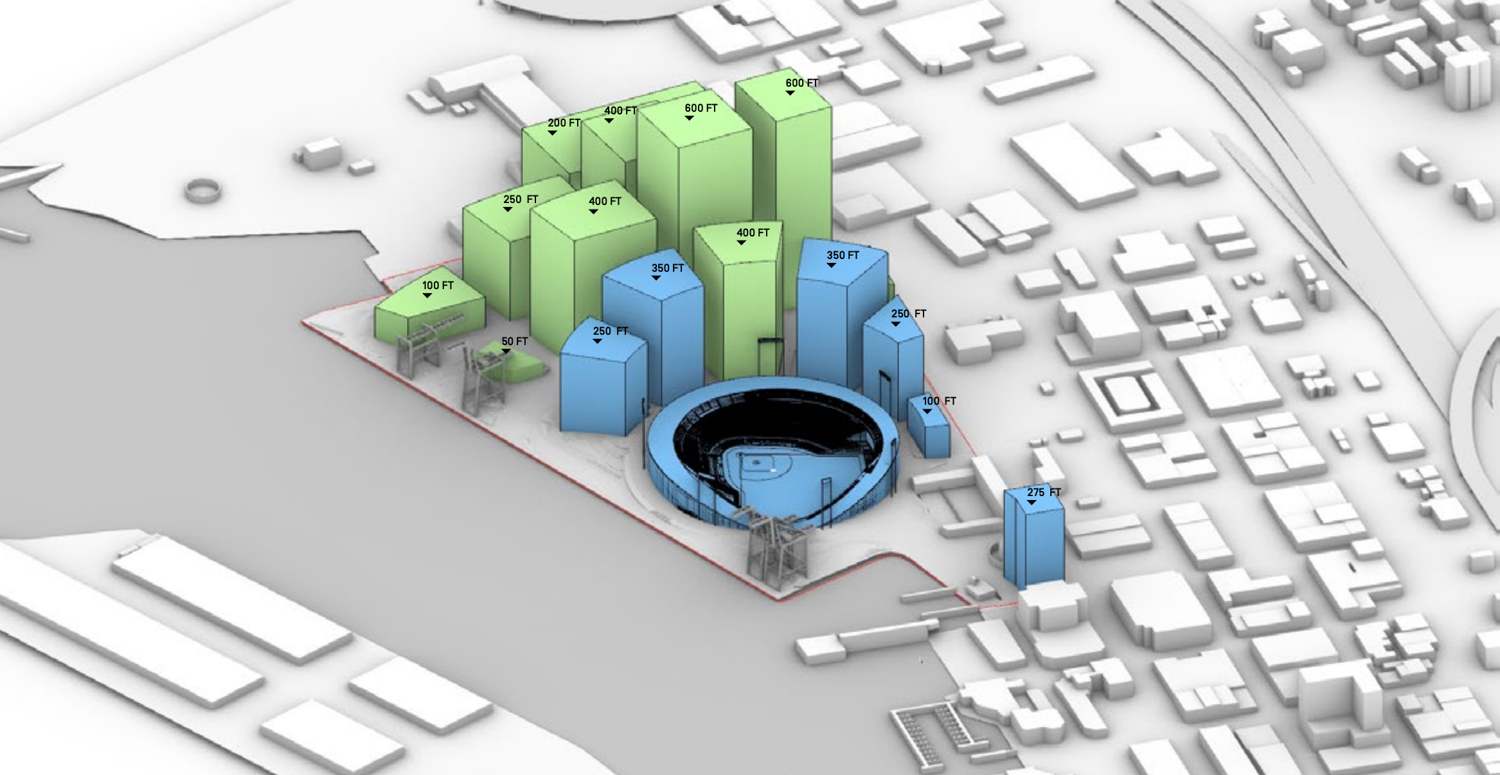
Oakland Waterfront Ballpark District project, illustration by BIG and JFCO
In a public statement, Oakland Mayor Schaff stated, “The Term Sheet put forth by city staff moves us one step closer to making the vision of a world-class ballpark a reality. If approved, the Waterfront Ballpark Project at Howard Terminal will be a game-changer for West Oakland and our entire region, providing affordable housing, public parks, great jobs, and other direct benefits for the community – all without the risk to our Port, our taxpayers, or the City or County’s general funds. We appreciate the A’s working with us to reach consensus on nearly all financial terms as well as continue to problem-solve between now and approval of a building development agreement.”
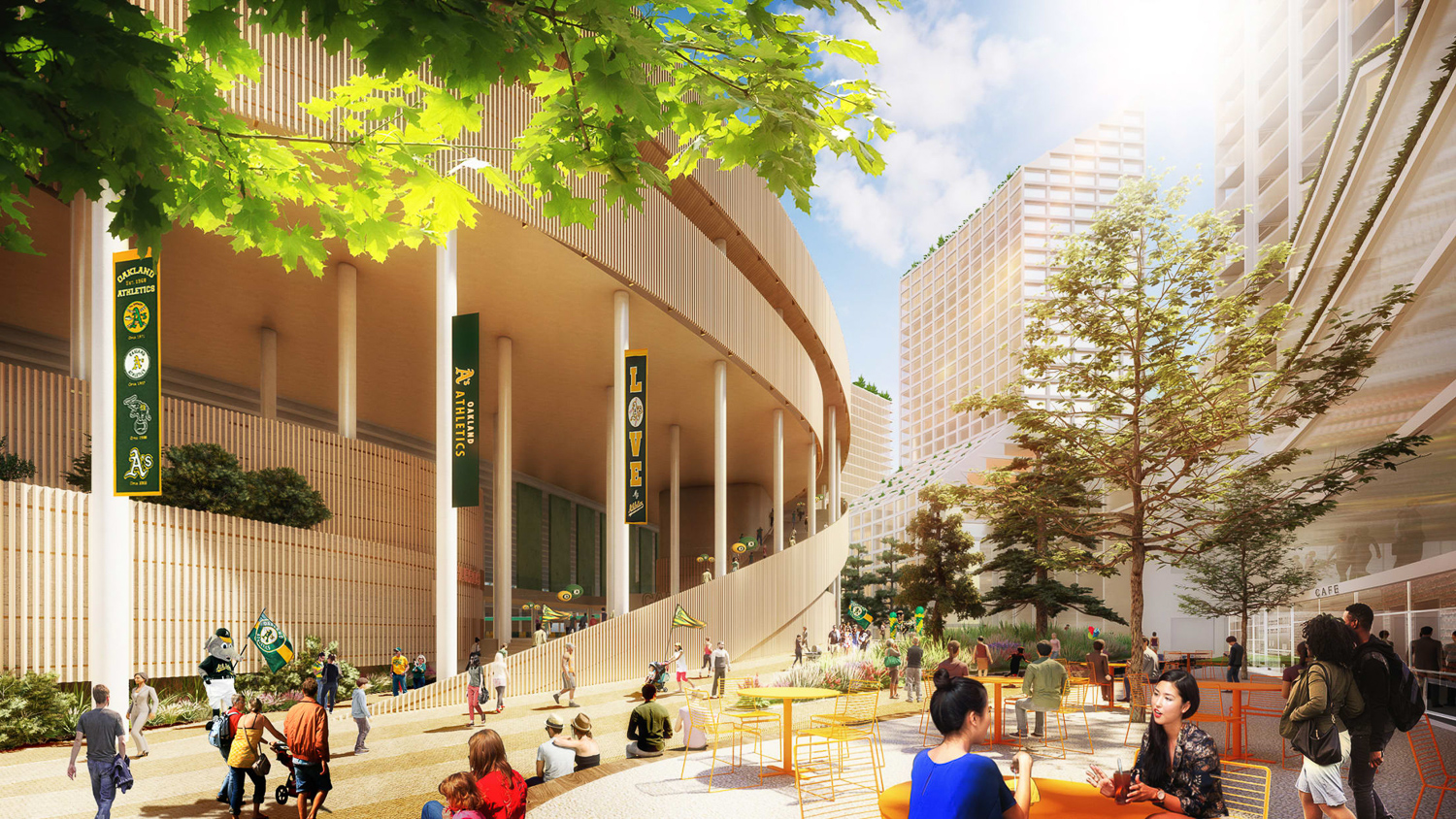
The Oakland Ball Park entrance, rendering by BKF Engineers
The initial proposal skirted around state rules for affordable housing.
Responding to the vote, MLB commissioner Rob Manfred publicly shared the following, “we are disappointed the City Council chose to vote on a proposal to which the A’s had not agreed. We will immediately begin conversations with the A’s to chart a path forward for the Club.” The commissioner, Kaval, and Oakland A’s owner John Fischer have flirted with moving the team to Las Vegas.
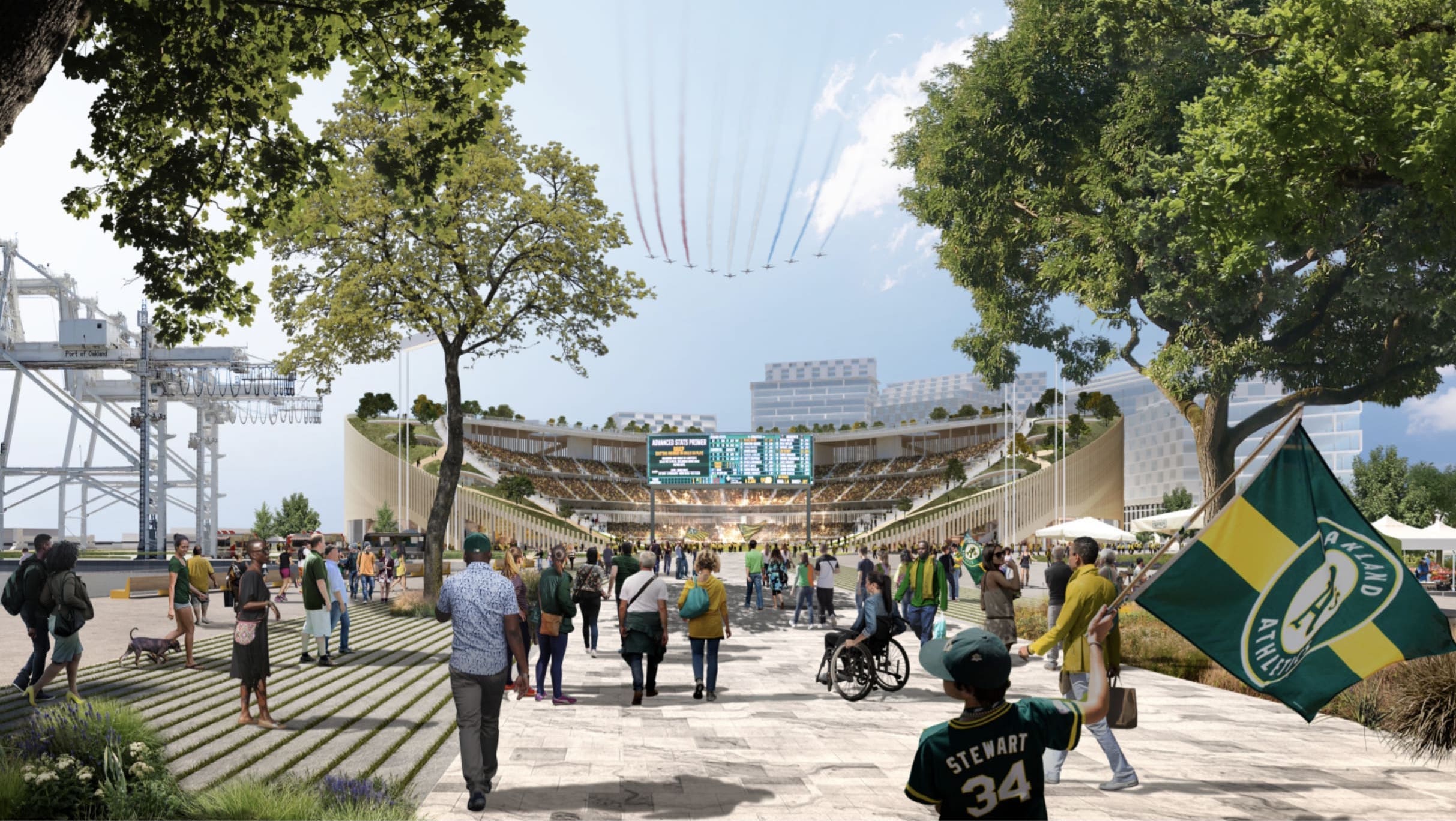
Oakland Ballpark Rendering via BIG
The Oakland A’s lease with the old stadium will end in 2024. The lease’s deadline has been the source of mounting pressure for the team and city to compose a final agreement soon. The team has been playing from the West Oakland field since 1968, moving here from Kansas City. If the Athletics were to move, it would mark their fourth home city since 1901. The team originated in Philadelphia and moved to Kansas City between 1955 through 1967 before moving to the East Bay.
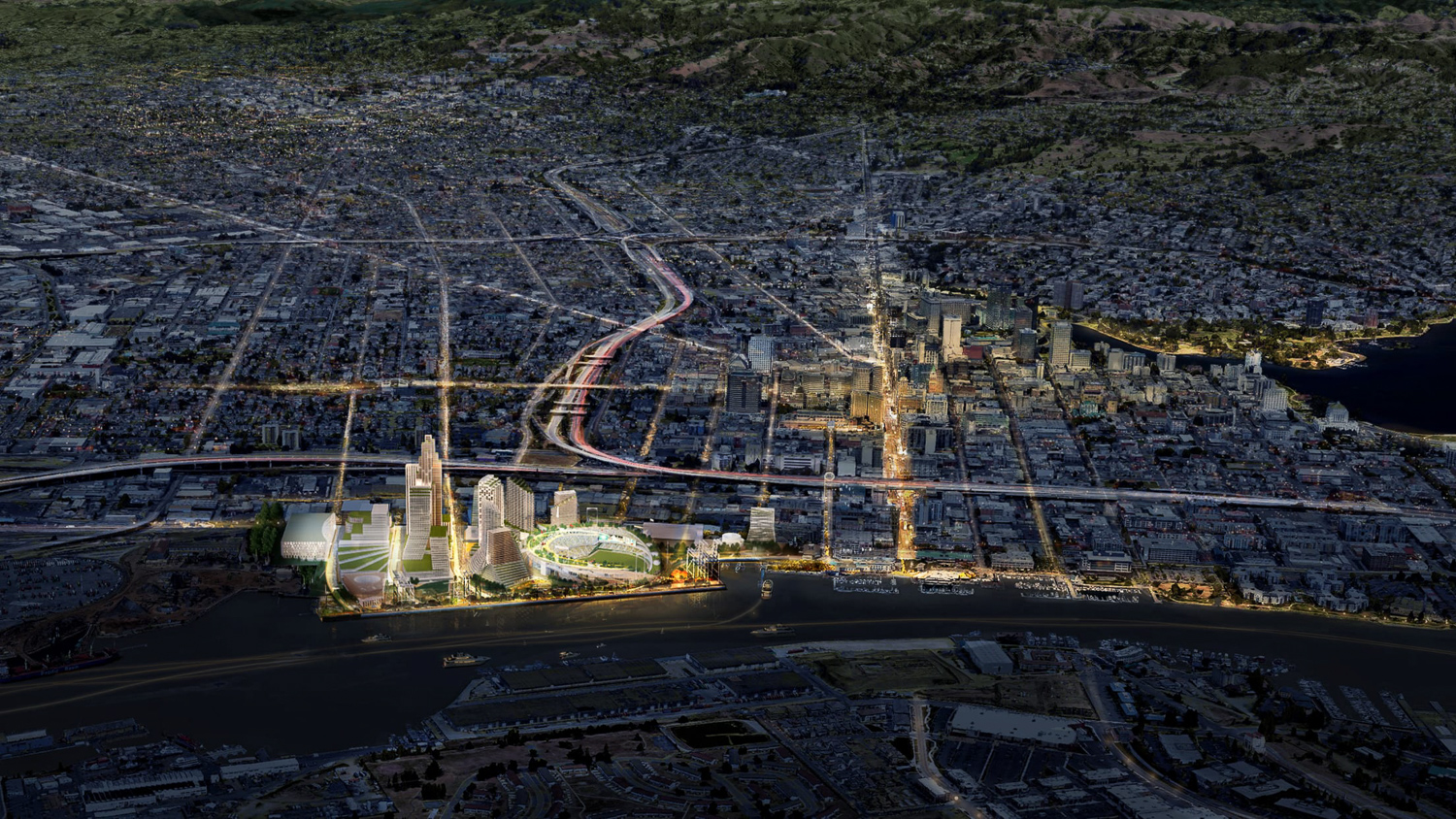
The Oakland Ball Park along the Oakland evening skyline, rendering by BKF Engineers
If the Oakland A’s were to leave the city, it would be the last remaining major league sports team to leave the city. The Raiders, the football team, moved to Las Vegas in 2020, and the Warriors, the basketball team, moved to San Francisco in 2019.
Realistic estimates suggest the team would move into Howard Terminal by 2027, raising further uncertainty about the development. The recently approved term sheet includes requirements for affordable housing, protections for tenants, and a 25-year non-relocation agreement.
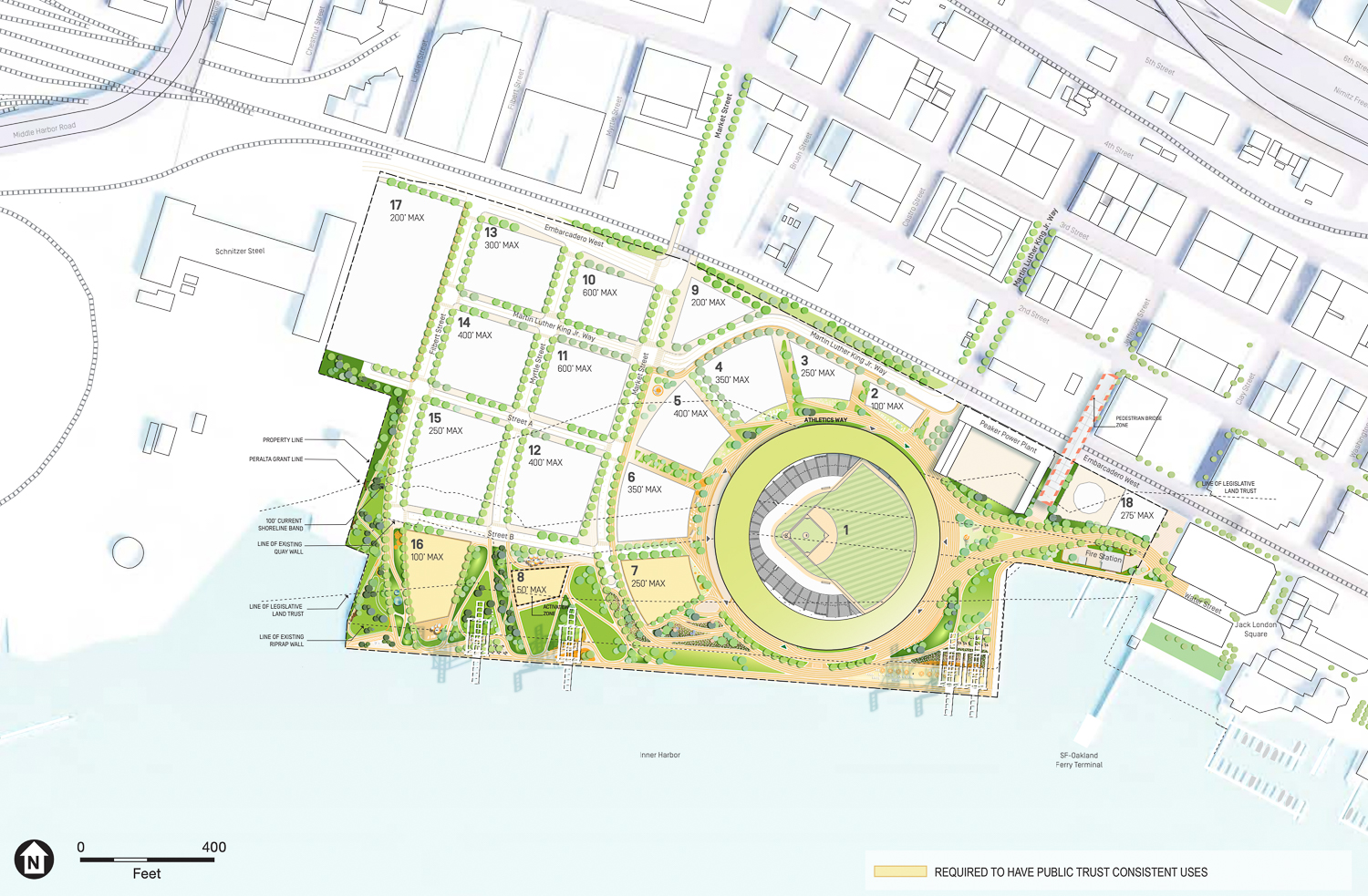
The Oakland Ball Park site map, rendering by BIG and JCFO
Six council members voted in favor of the terms, with councilmember Noel Gallo rejecting and councilmember Carroll Fife abstaining. The lone nay voter, Noel Gallo, stated his belief that the best path forward is to renovate or rebuild the existing stadium for less cost and a shorter timeline without disrupting the city port. Caroll Fife questioned the purpose of holding such a vote after Kaval declared that the team would reject the term sheet.
The opinions of councilmember Gallo are echoed by longshoremen unions and businesses operating at the Port of Oakland. They have been opposed to the development due to the anticipated complications when thousands of residents and civilian boats are placed beside the eighth busiest port in the United States.
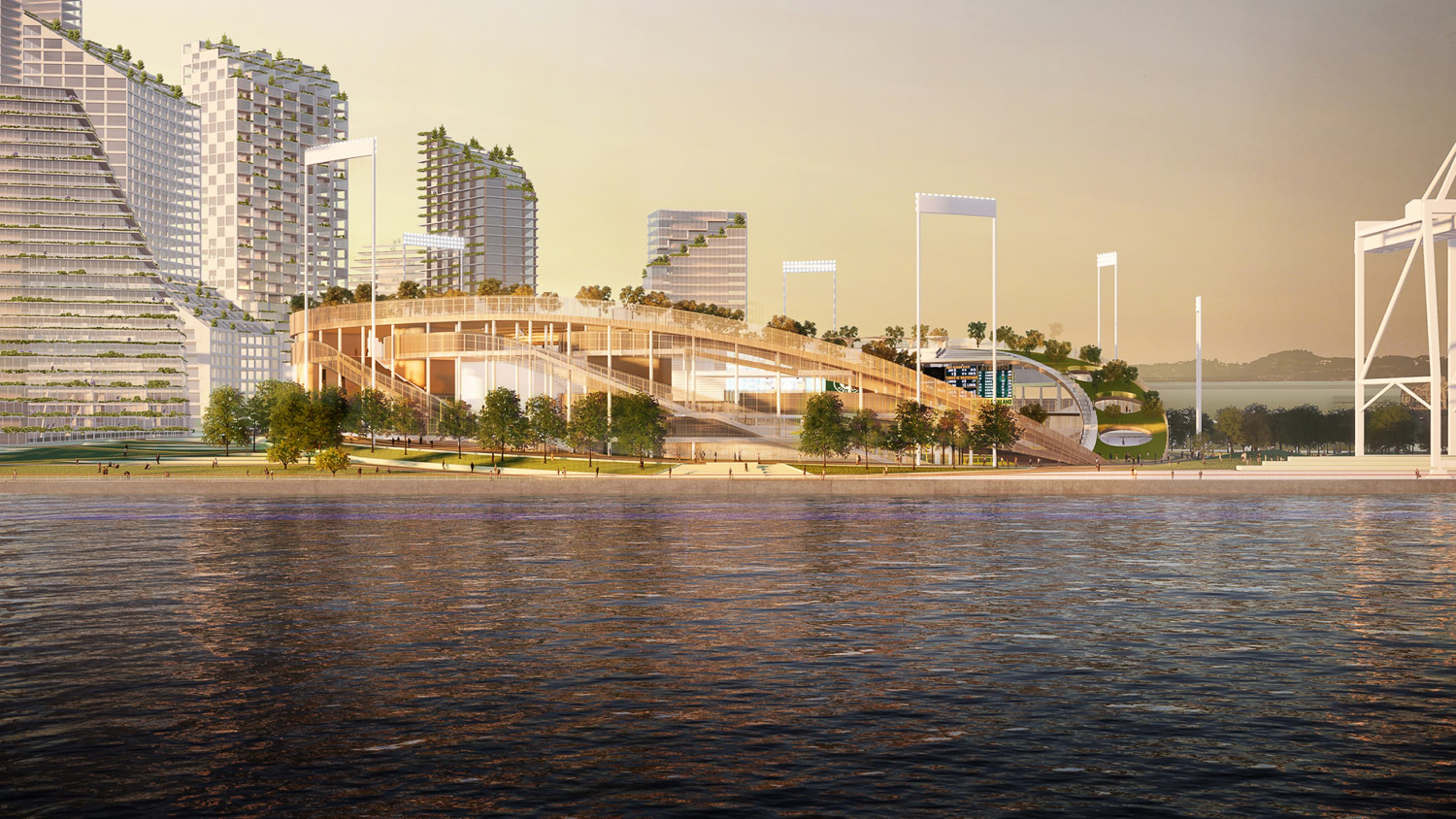
The Oakland Ball Park viewed from Alameda, rendering by BKF Engineers
Bjarke Ingels Group (BIG) is the leading architecture firm managing design concepts and construction for the new development plan. Gensler is managing the planning and design execution and is the executive architect of the ballpark, and James Corner Field Operations is the landscape architect and shares responsibility for the master planning with BIG. The new stadium would seat 35,000 attendees.
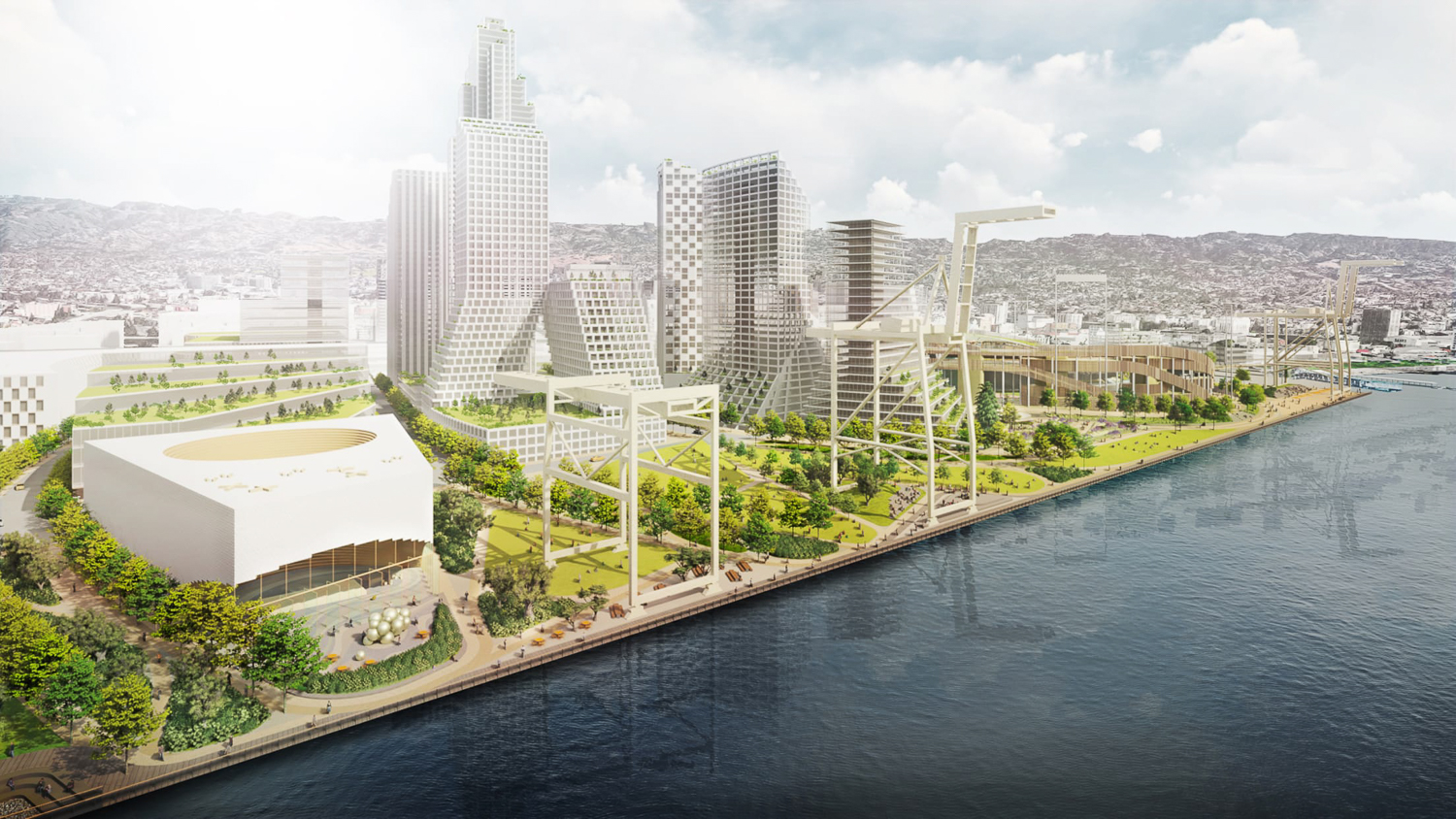
Development proposed adjacent to the Oakland Ball Park, rendering by BKF Engineers
The district could include 3,000 new residential units, 1.5 million square feet of offices, 270,000 square feet for retail, 50,000 square feet for an indoor performance venue with a capacity for 3,500 people, and 280,000 square feet for a hotel with 400 guest rooms and conference facilities. Parking for 8,900 vehicles has been spread across the eighteen parcels.
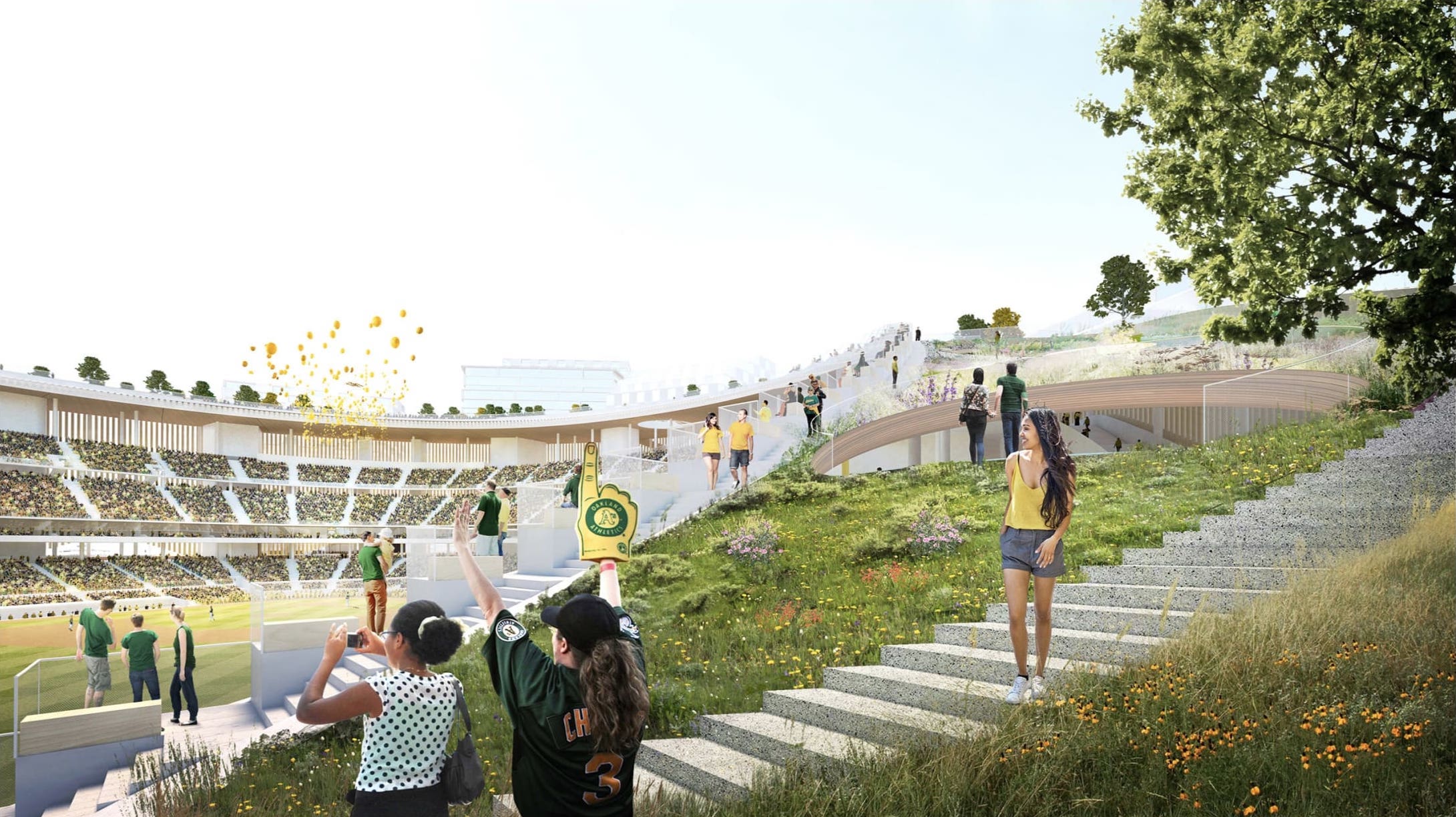
Oakland Ballpark Stadium Interiors via MLB
The buildings would be surrounded by 18.3 acres of privately owned public open space. The Oakland A’s are the project developer and sponsor, operating through the Oakland Athletics Investment Group LLC.
At the end of the meeting, Kaval stated, “we are taking time to really digest what was presented to us for the first time in the meeting and become more knowledgeable about what it means for the project, its future and the A’s.” At this point, all eyes are on Kaval. He is expected to defer to the Major League Baseball organization for the next step.
Subscribe to YIMBY’s daily e-mail
Follow YIMBYgram for real-time photo updates
Like YIMBY on Facebook
Follow YIMBY’s Twitter for the latest in YIMBYnews
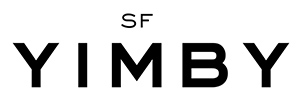
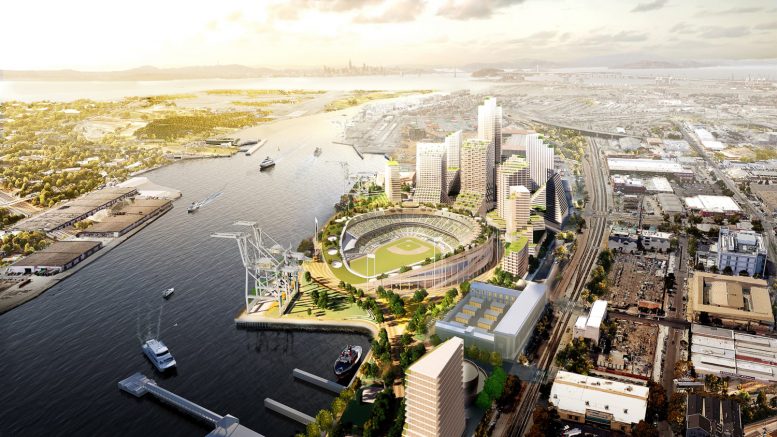
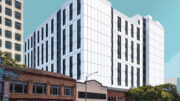
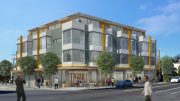
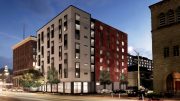
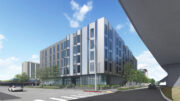
Thank you for your detailed reporting. I really hope Kaval can get Fisher on board to accept these terms of community benefits, affordable housing and the non-relocation agreement (which is only 5 years longer than what they’ve already agreed to). It doesn’t seem like a whole ton more to accept in the grand scheme, and allocating less affordable housing than what the Giants agreed to years ago.